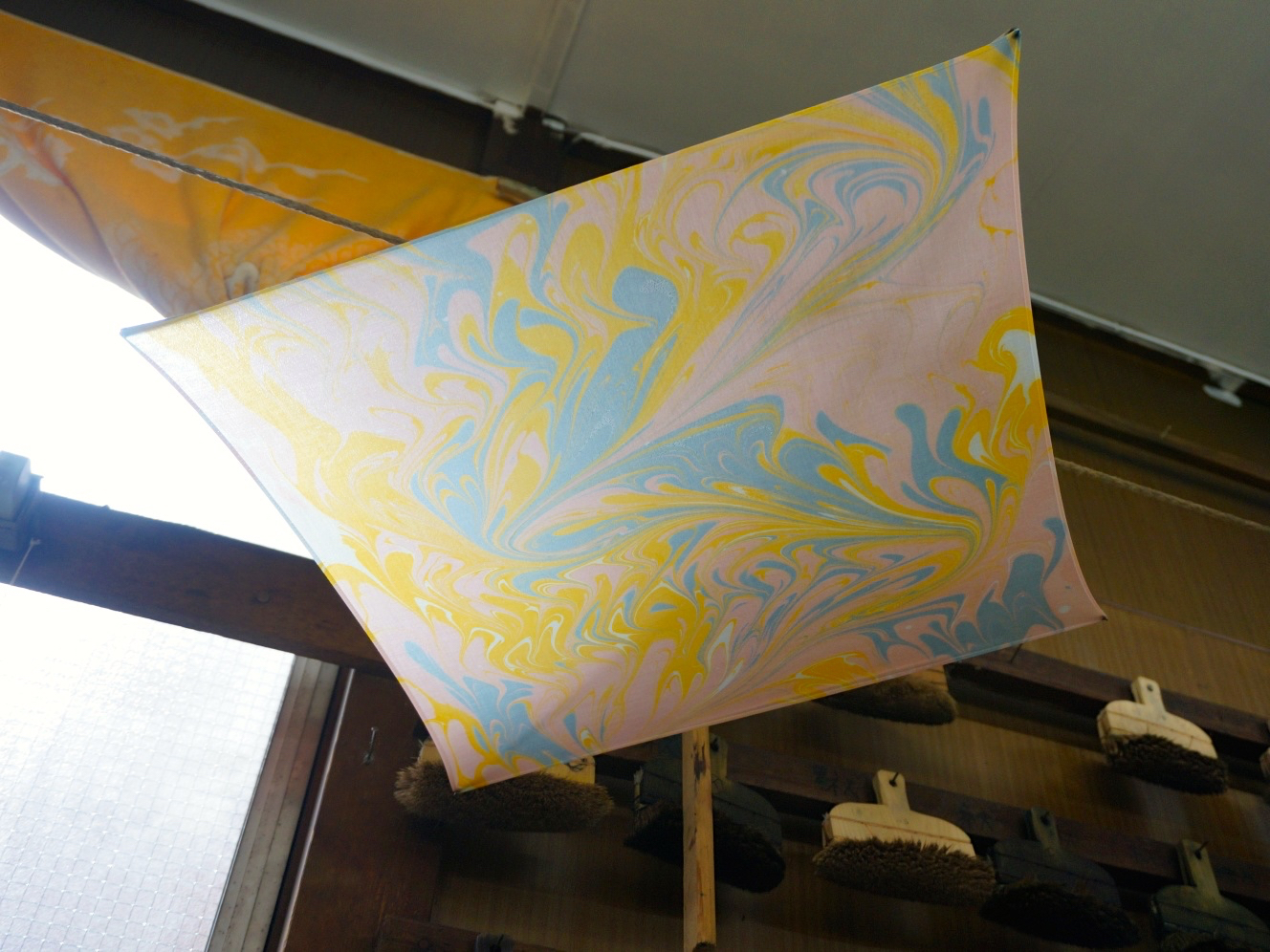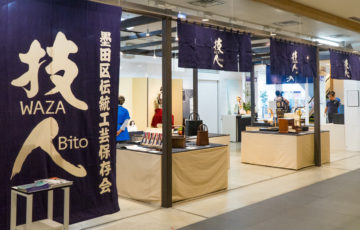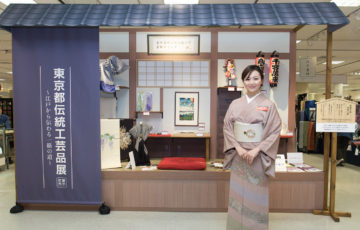
On April 15th, I was given the honour to learn and gain a beginners understanding on one the many fascinating Japanese craftwork methods. On this fieldwork, hosted by Mikoshi Japan, I was introduced to Japanese ink marbling, “sumi-nagashi”. My first impression of this expedition was that it was going to be a very public presentation in a large museum. However, it was to my surprise that I was going to be accompanied with only 3 other people, including my senior who invited me to this experience.

Concerned in the onset of the expedition, I slowly began to enjoy this experience, which was very intimate and personal. When entering Mr. Takayuki Takahashi’s gallery, I was provided a very calming and blissful atmosphere. Mr. Takahashi’s gallery created a tone that is very welcoming and sparks interests, even for those that have very little to no knowledge of craftwork. I myself had very little knowledge on the process of sumi-nagashi, therefore, making it a grand privilege to learn. I was amazed as I watched Mr. Takahashi place the ink in the glue water with great control and precision, using different tools to create different designs. All of his executions regarding how much ink was placed in the water, in what direction and so on, was all premeditated with full consciousness of how the design might result to.

I watched Mr. Takahashi and his assistant on both ends of the 14-meter yukata material placing it carefully on the inked water and out, with the entire design from the water lifted onto the long material. The expedition took an exciting turn once we were invited to execute the same process. Of course not to make a yukata, but using the same process to make our own handkerchief. As I randomly splattered colours into to inked water, only to hope that it would turn out somewhat decent, I realized how much acquired knowledge, dedication and experience Mr. Takahashi has gained over many years to have great talent and poise whilst creating yukata designs.


The Q&A discussion was our opportunity to learn more about whatever we were curious about in regards to Mr. Takahashi’s work or his perspective on the field. It was difficult for me in the beginning because I honestly was not sure what to ask about. I had no previous knowledge except for what I had seen that day. Many topics of discussion regarding some of the history of Mr. Takahashi’s occupation as well as the current situation of craft making were held, which lead me to ask my one and only question: Are there enough young people, people in my generation, that express interest towards this field? He explained the difficulties of promoting interest of craftwork as a career considering the amount of patience and time required to pursue it. Making a profit to eat and live as a craftsperson has its challenges is what I understood. The number of people buying yukatas are not as large of a number as it once was, is just one of the issues. However, I felt that the way Mr. Takahashi promoted himself and his work by making a gallery is a grand step to create more attention and appreciation towards works such as his.
This expedition, I believe, is an experience all generations should be able to be a part of and appreciate. In addition to this, I think this interview and tour was a great way to get young people to indulge into the beauty of traditional craftwork. I truly think that if more craftspeople, young and old, are given the chance to share their story and perspectives, more people will be honoured and interested in providing a stronger support for this field.
To Takahashi-san and Mikoshi Japan, thank you for the amazing experience

written by Mirella Kami
フォローしていただくと、更新情報を受け取ることができます。


























